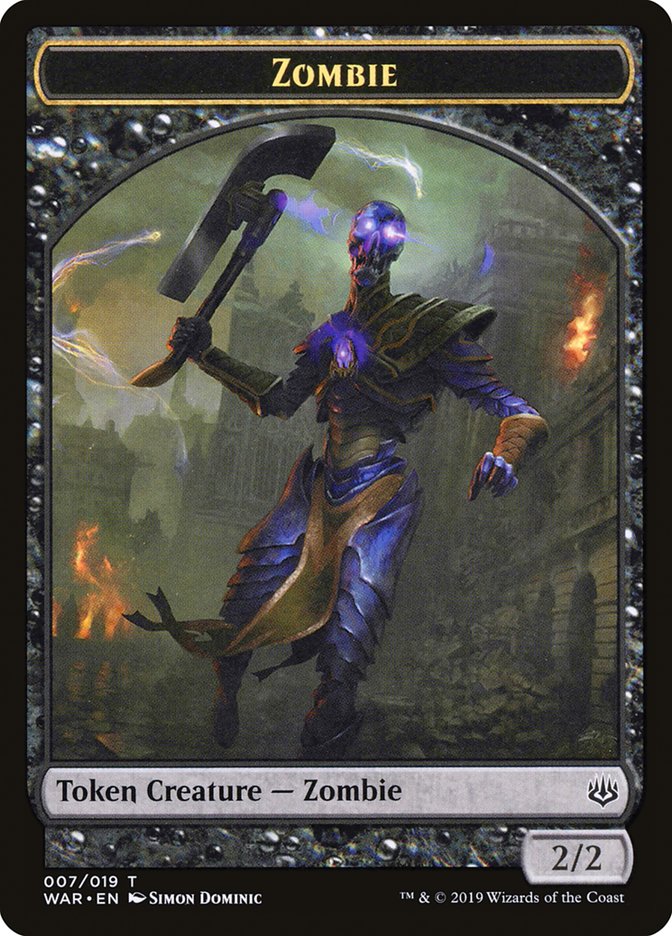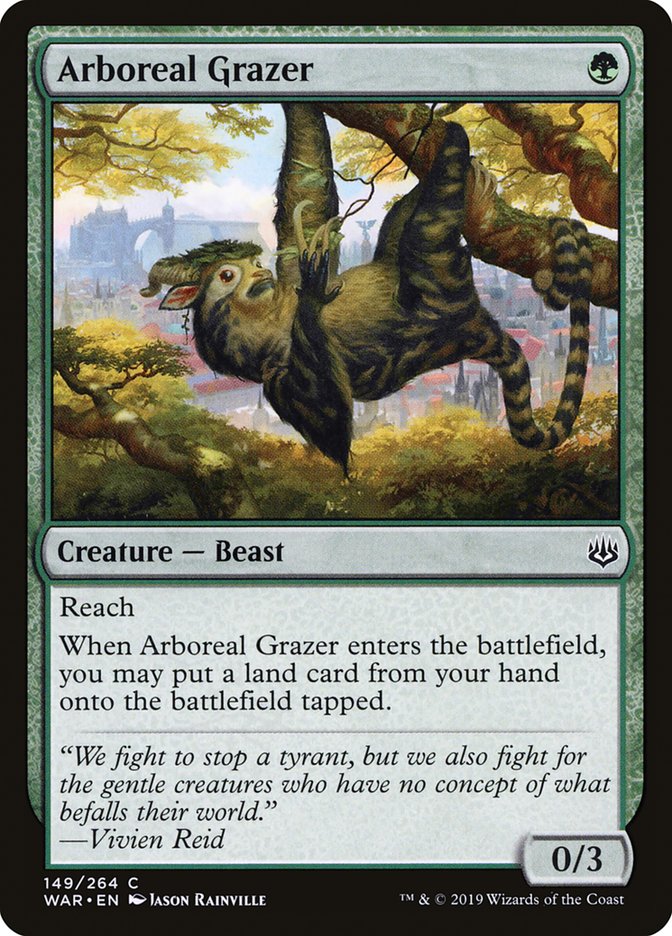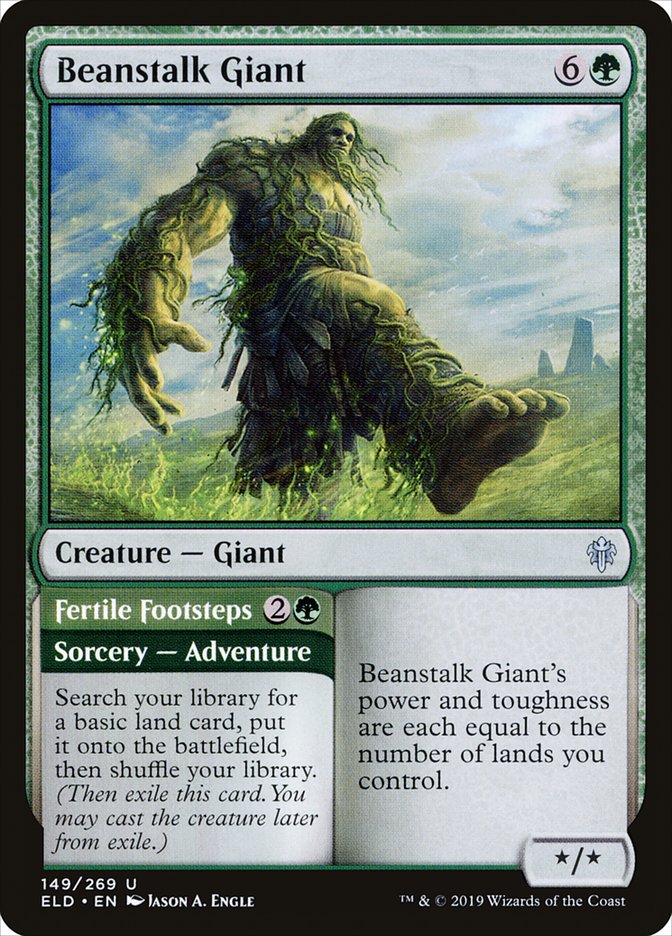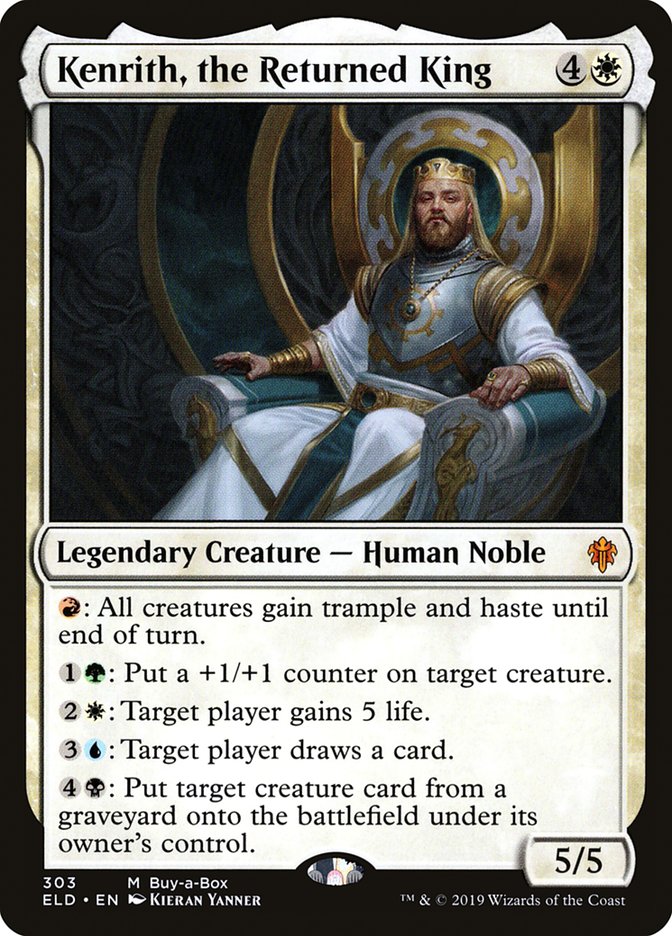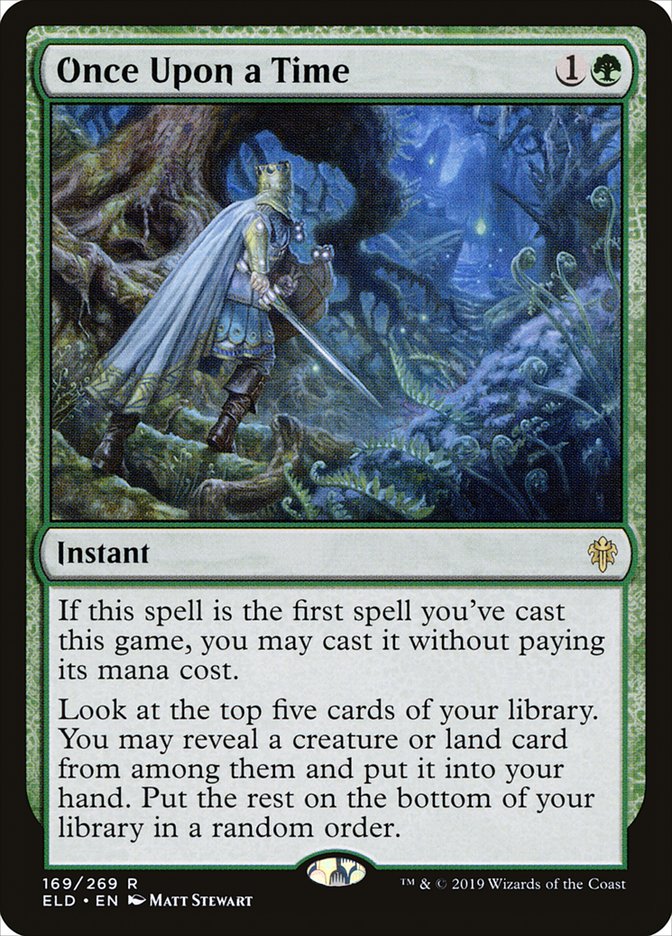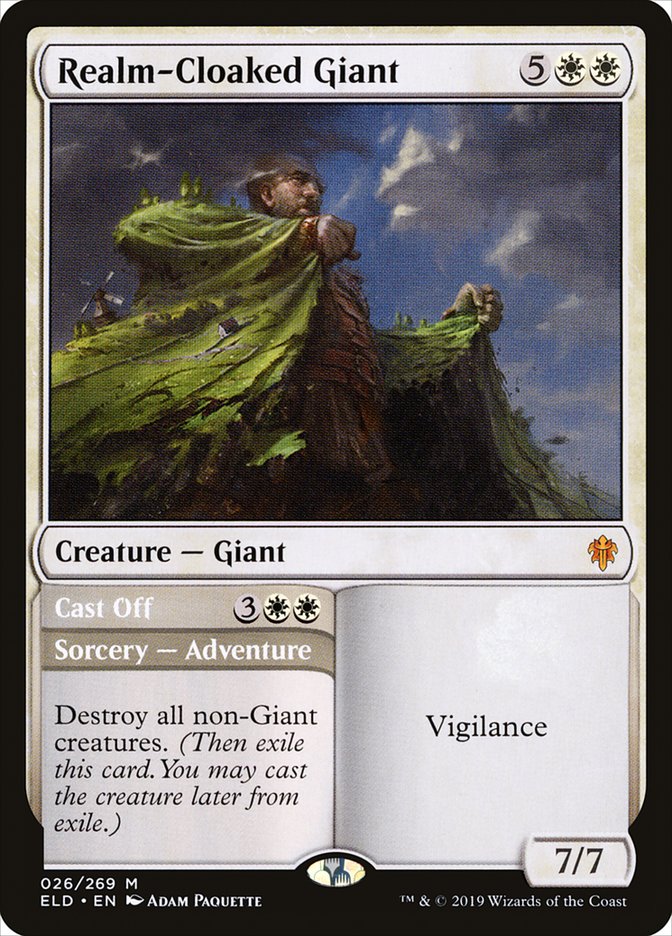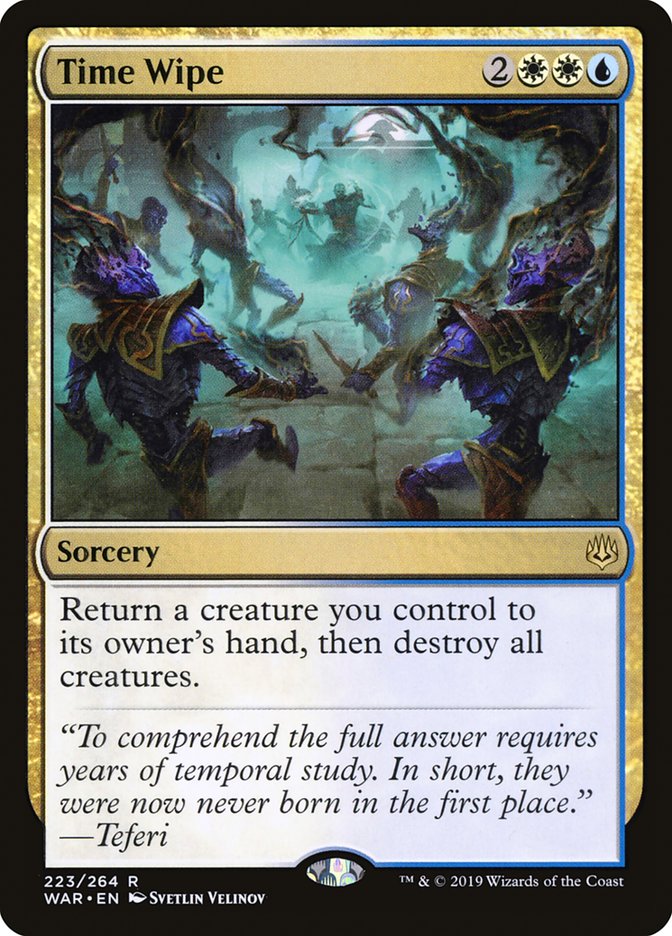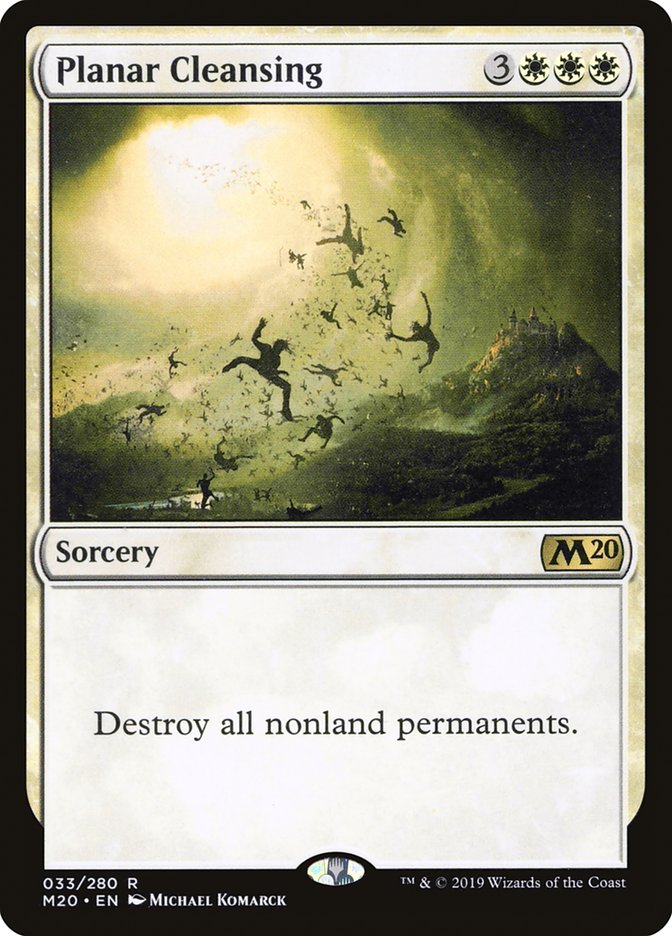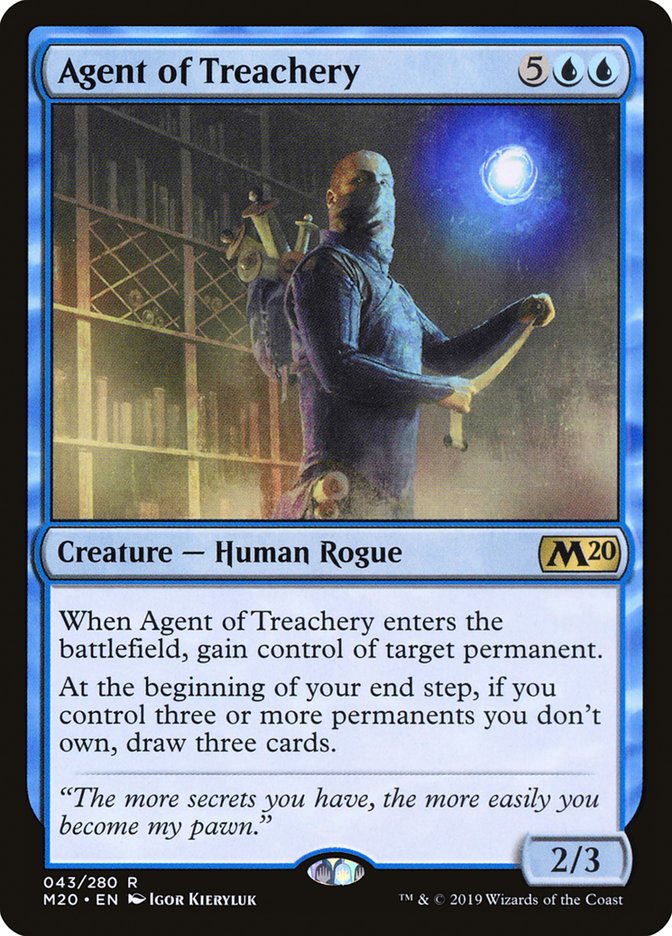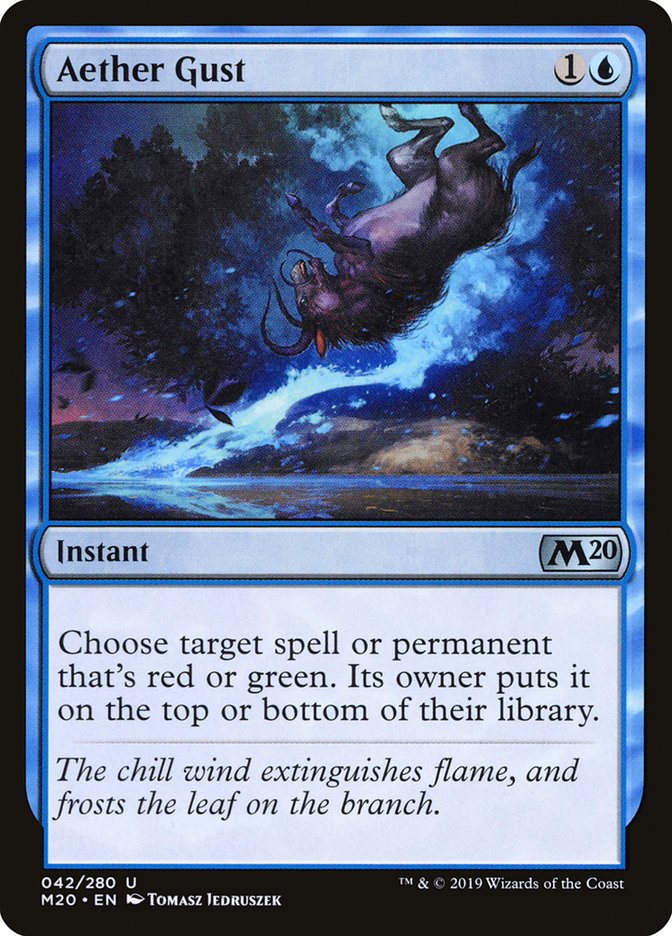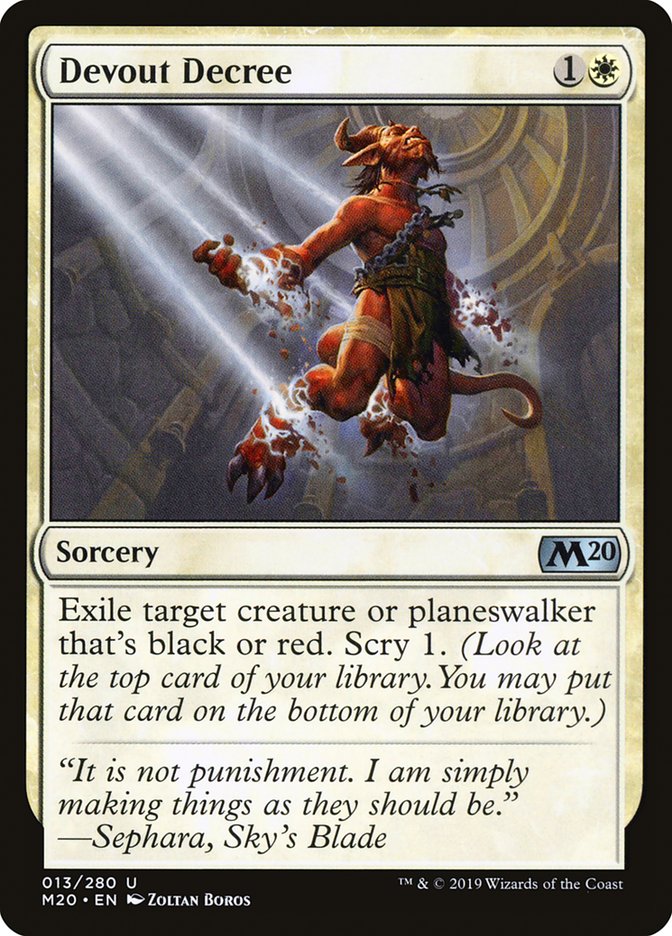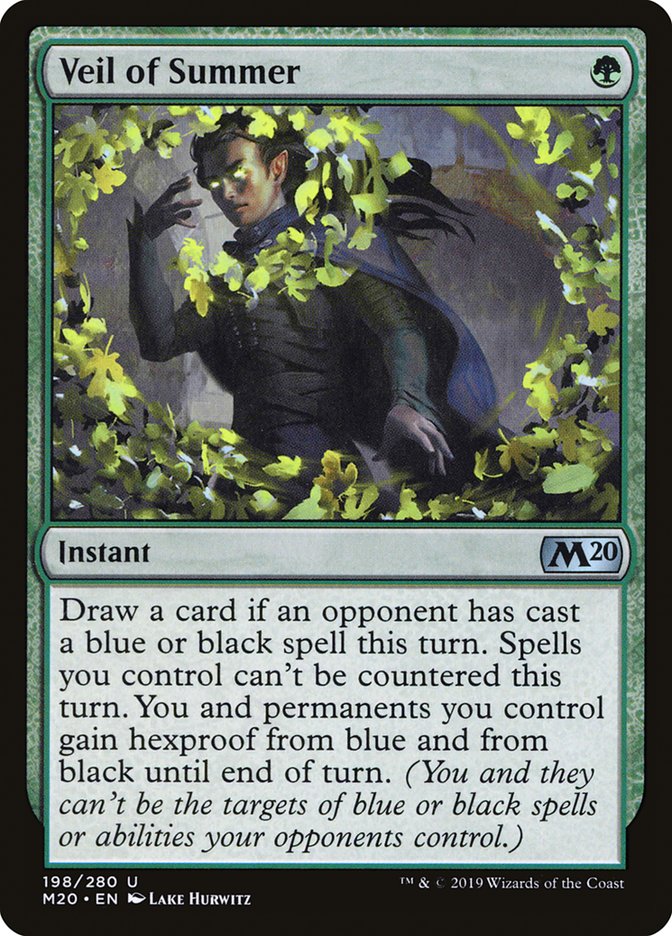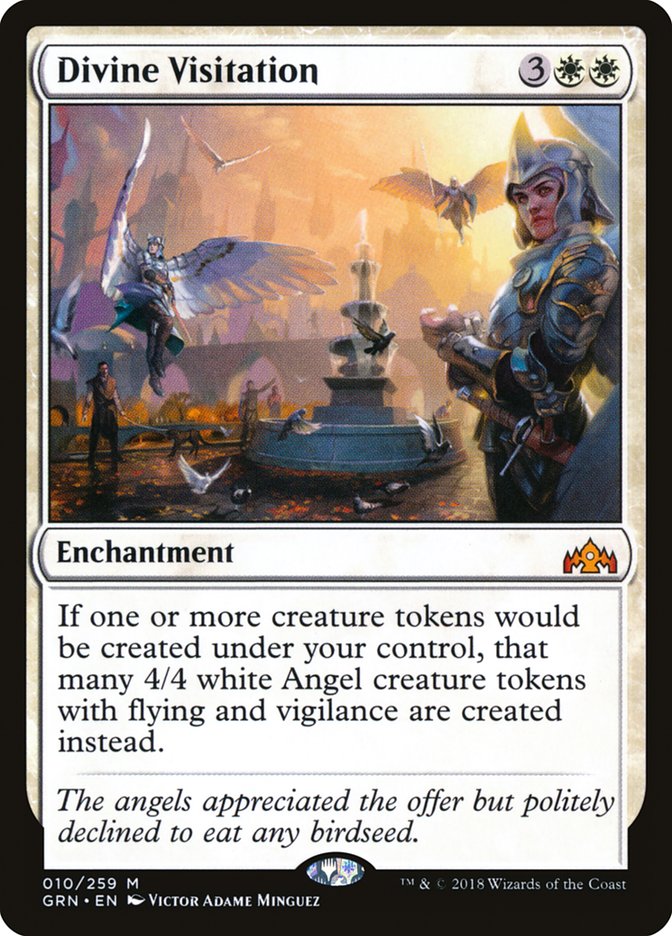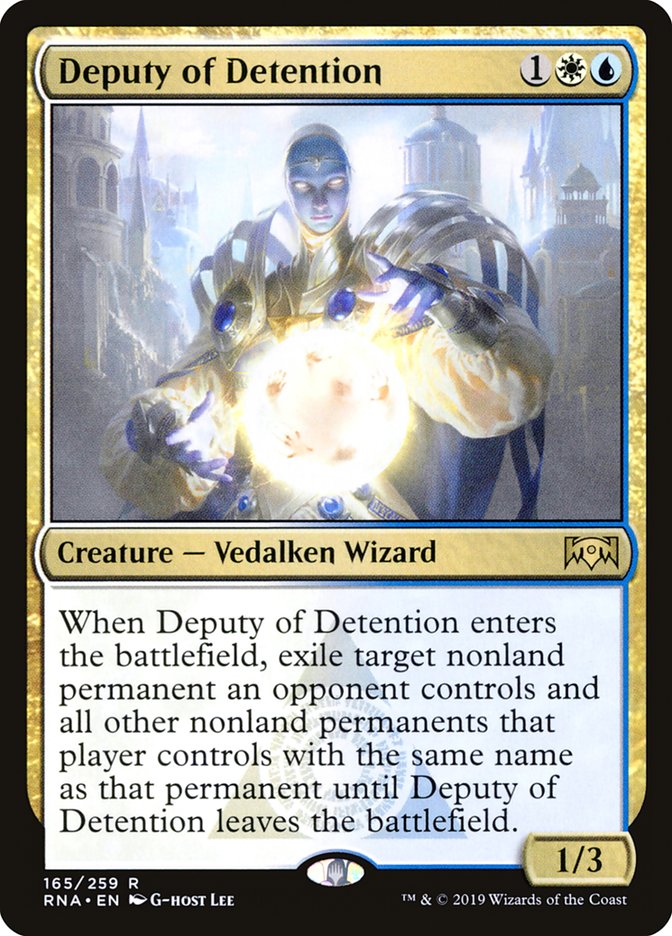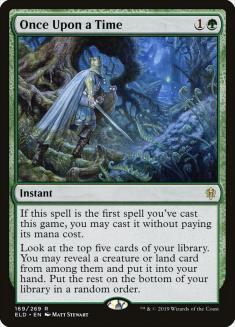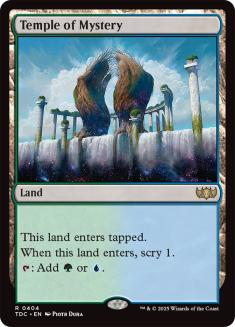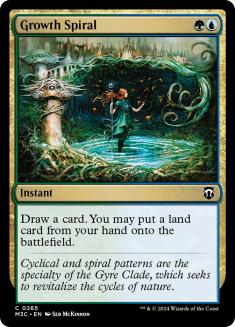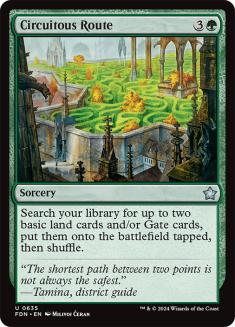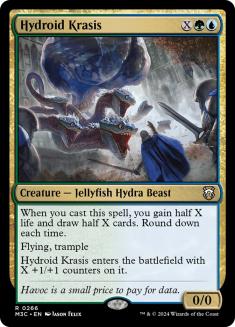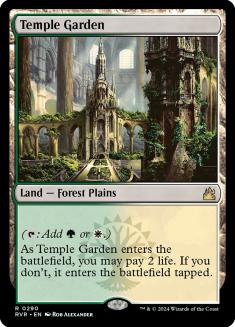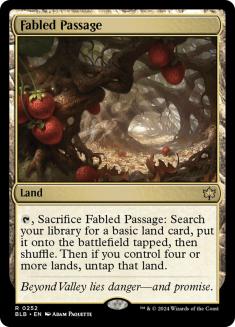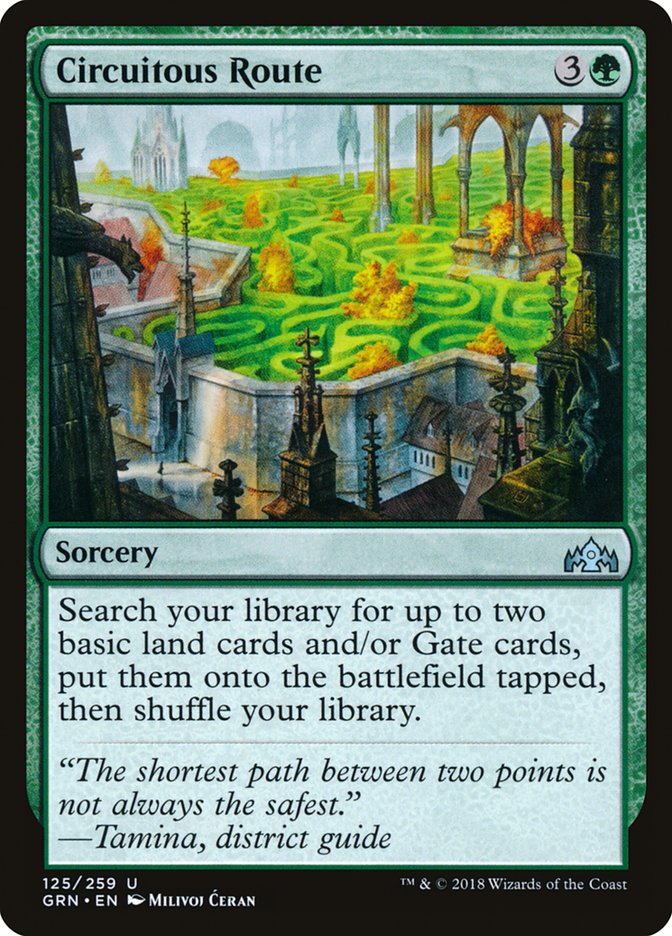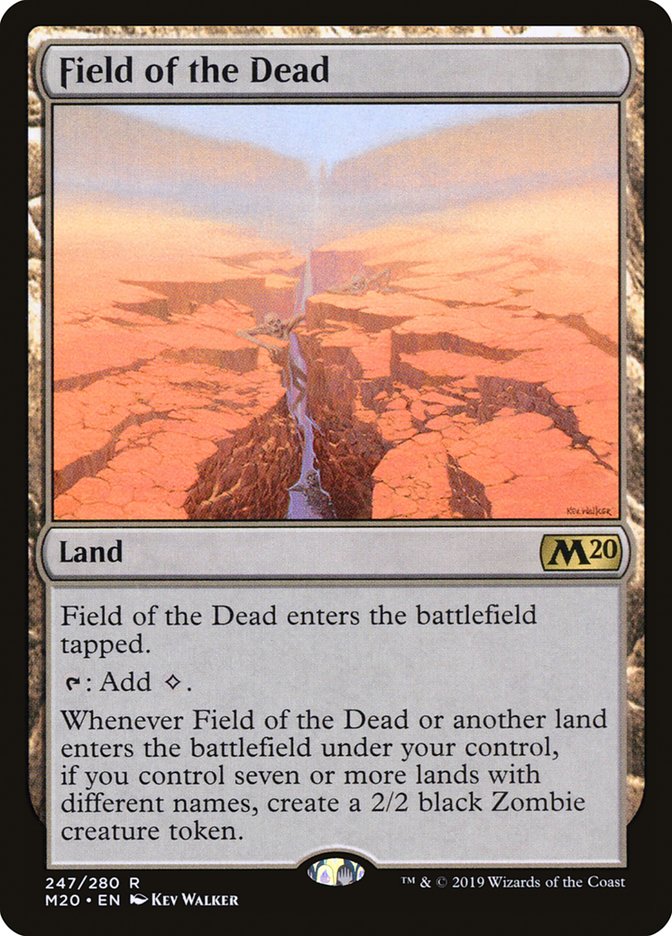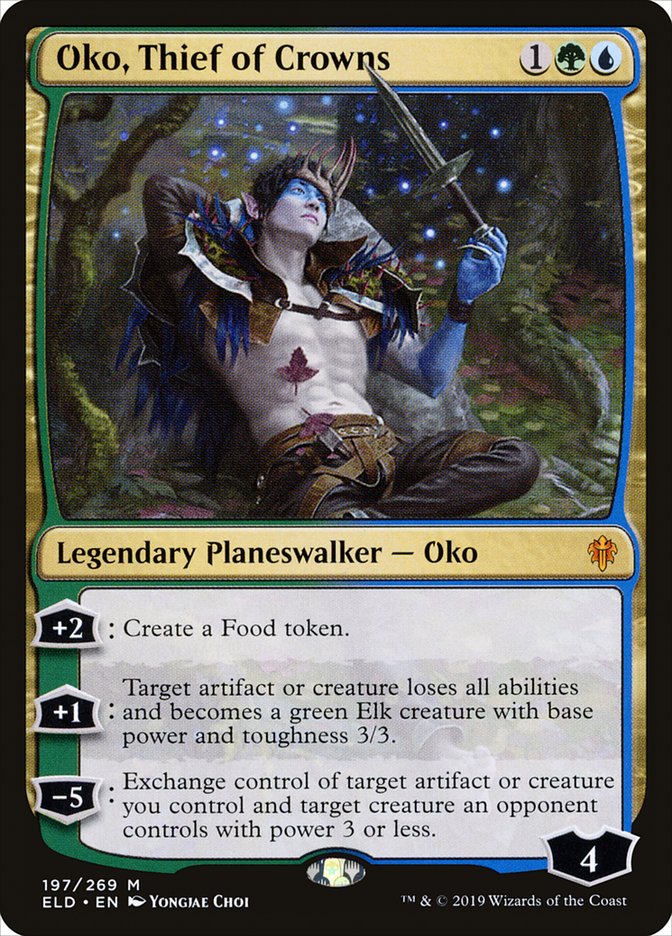We really didn’t want to play Bant Golos at Mythic Championship V this weekend. The deck was obviously good, but the new set was so strong and some of the cards seemed so broken that it felt impossible that the best thing to be doing was getting your seventh different land onto the battlefield to generate a 2/2 Zombie.
If there was, we didn’t find it. It looked like we should be able to – after all, Bant Golos is a slow deck with very limited disruption and that seems like it should be very exploitable – but we didn’t. We kept running into the same issues:
- Playing big creatures or artifacts was problematic due to Oko, Thief of Crowns. The new legendary artifacts were sweet, but it was hard to dedicate your entire deck to playing The Great Henge or The Cauldron of Eternity when your opponent could deal with them by simply activating Oko.
- Playing instant-speed spells was problematic because of Teferi, Time Raveler. Cards like Wilderness Reclamation were potentially strong versus Golos, but it was very hard to build a deck like that that didn’t completely fold to Teferi.
- Playing aggro was hard because of the mana. It was serviceable in a lot of the builds, but it was never perfect. Playing monocolored aggro meant accepting you would lose some games because your card quality wasn’t up to par, but playing two-color aggro meant accepting you would lose some games because your mana just wouldn’t function a percentage of the time.
- Any deck that was built exclusively to beat Bant Golos would likely be hit by the same type of hate that people would include in their decks to beat Bant Golos. This was a key problem for a lot of our Fires of Invention decks. Sure, you’d beat Bant Golos, but any modification that players make to their decks to beat Bant Golos (such as adding maindeck Disdainful Stroke, or Drill Bit, or Unmoored Ego) would just make them beat you as well.
So, if we didn’t feel like we could play big creatures or artifacts, and we mostly couldn’t play spells, and the mana in aggro decks was bad, and the combo decks were splash-hated by the most popular deck, then there wasn’t much to turn towards other than the deck that wins with lands.
This is what we registered for Mythic Championship V:
Creatures (16)
- 3 Hydroid Krasis
- 3 Arboreal Grazer
- 4 Golos, Tireless Pilgrim
- 2 Agent of Treachery
- 2 Kenrith, the Returned King
- 2 Realm-Cloaked Giant
Planeswalkers (3)
Lands (28)
Spells (13)

This deck is fairly straightforward to play – it’s a control / ramp hybrid where you try to stay alive while making your land drops. Once you hit your seventh different land type, you start making 2/2 Zombie tokens as you’re making your land drops, which means it becomes very hard to damage you on the ground because every turn you’re generating more blockers for free. Eventually, you generate enough Zombies to start attacking and then your opponent is dead. The deck has a lot of tutoring, search, and card drawing, so it’s very consistent at finding its pieces, which means it does the same thing every game and its win condition is particularly resilient to disruption right now because there are few playable ways to get rid of a nonbasic land.
These are some of the cards whose inclusion is debated or not obvious:
I see a lot of people cutting Arboreal Grazer altogether, and I think that’s a mistake. Grazer is an important defensive tool against aggro decks while also providing meaningful acceleration against everyone else and acceleration that you can Once Upon a Time for. It feels bad to use one of your valuable nonland slots for a card that feels like it’s not doing anything, but I think Grazer is quite important.
If I like acceleration that I can Once Upon a Time for, then I must like Beanstalk Giant too, right? Well, not really – or at least not as much as I like Grazer. Beanstalk Giant does fill the role of “tutorable acceleration” if you want it to, but it doesn’t play double duty as a defensive card and accelerating from three to five is less valuable than from two to four because of Circuitous Route and Teferi, Time Raveler. There’s also the matter that a lot of the lands in your deck enter the battlefield tapped, which sometimes means the Giant isn’t actually accelerating you. For example, imagine you have a hand of four tapped lands, one untapped land, and a five-drop. In this spot, Grazer lets you cast your five-drop on Turn 4, but Beanstalk Giant doesn’t (since you need to play the untapped land on Turn 3 to be able to cast it).
Of course, the Giant does become a sizeable creature later on, especially if paired with Realm-Cloaked Giant or Kenrith, the Returned King to push it through, but I’ve found this to be a very minimal bonus. In my opinion, the right number of Beanstalk Giants is zero.
Kenrith, the Returned King is a bit of an oddball card in this deck, but it plays a couple of important roles. The first role is that it lets you just kill your opponent, especially when you end up in battlefield stalls. Giving all your creatures haste and trample lets you attack for a surprising amount of damage when you’re making Zombies, especially if it’s accompanied by a reanimated Golos, Tireless Pilgrim. In the mirror, it’s not uncommon for players to exchange turns creating a lot of Zombies that crash into each other the following turn, and Kenrith lets you break that by attacking a turn sooner.
The second role is that it gains life. It’s not rare to stabilize versus an aggressive deck and then lose to a flyer or a burn spell, and Kenrith stops that from happening. The third role is serving as a bridge card that’s also a mana sink. This is a mana ramp deck, but you can’t assume you’re ramping infinitely every game, so having a card you can cast for five mana and that will have an impact on the battlefield (even if that is just blocking Questing Beast) is valuable. Normally this type of deck cannot afford a card like this, since it must make room for both ramp and payoff, but Kenrith is a bridge card that happens to be a payoff when you have a lot of mana, so you can play it. In this regard, it’s similar to Hydroid Krasis.
Once Upon a Time is incredible in this deck and I think you’re making a big mistake if you don’t play four. It’s just so good at finding you lands or acceleration in the early game and then the right haymaker later in the game, and you often have extra mana so you’re rarely upset to draw it. This deck has a lot of clunky opening hands and Once Upon a Time means you can keep a lot more hands than you would otherwise be able to.
Once Upon a Time is also the easiest card to cut in sideboarded games, but I urge you to think long and hard about that before you do it. I’m not saying it’s never right, but most of the time it isn’t right and it’s just what feels safe to cut, so I would try to find another option.
There are three potential sweepers you can play: Realm-Cloaked Giant, Time Wipe, and Planar Cleansing. They all have their merits, and which one you choose will depend on what you expect to face.
The default sweeper against aggressive strategies is Realm-Cloaked Giant. Being a 7/7 vigilance creature comes up sometimes, but the real reason it’s the best there is because you can select it with Once Upon a Time. Having your sweeper be a creature gives Once Upon a Time an entirely new dimension and it makes it feel like you have way more sweepers than you actually do. To illustrate, if you have three Realm-Cloaked Giants in your deck, each Once Upon a Time has a roughly 24% chance to find one.
Realm-Cloaked Giant also has a potentially strong interaction with Teferi, Time Raveler, as you can cast the Giant, bounce it, and then sweep the battlefield again. This doesn’t come up often but it can be quite relevant when it does come up, like in mirror matches that go very long.
I’ve heard some people say that you need Beanstalk Giant to make Realm-Cloaked Giant work, but I don’t think that’s true. Just treat it as a sweeper and it’s good enough.
The next most common option is Time Wipe. Time Wipe has a lot of good synergies in this deck, since it can bounce Hydroid Krasis, Realm-Cloaked Giant, Agent of Treachery or even Arboreal Grazer. This is especially strong in mirror matches and in sideboarded games, when you also have access to Deputy of Detention (which is strong with Time Wipe but weak with other sweepers). The counterpoint is that you cannot search for it and it’s also harder to cast – your blue and white sources overlap quite a bit and sometimes you end up in positions where you could cast Realm-Cloaked Giant but cannot cast Time Wipe. It’s not super relevant, but Time Wipe also gets hit by Mystical Dispute at a discount, so keep that in mind.
I would say that, as a general rule, Time Wipe is better than Realm-Cloaked Giant against non-aggressive decks, because you have time to naturally draw it and to set up your mana. Against decks where you are hard pressed to sweep the battlefield as early as possible, the Giant is better.
Planar Cleansing is by far the least popular option, but it can potentially be the strongest. It’s slower and harder to cast, but the best sweeper versus decks full of planeswalkers or based around cards like Fires of Invention.
In our list, we have two Realm-Cloaked Giant and one Time Wipe in the maindeck, and one Planar Cleansing in the sideboard. We thought Time Wipe was the best in the mirror, and we also thought the mirror would be the most popular deck by a lot, but we figured the rest of our deck was already set up against it, and this is where we could gain the highest percentage against the rest of the field without hurting the mirror too much.
Agent is the best card we found for the mirror. Most of the time, you ignore the battlefield and steal Field of the Dead, since that’s the most important thing in the long run, but stealing Golos, Tireless Pilgrim happens sometimes as well. Between Teferi, Time Raveler; Time Wipe; and Kenrith, the Returned King, it’s not uncommon to recast your Agent of Treachery multiple times in a game.
There’s also a different Golos deck – one that runs Fires of Invention and Fae of Wishes. I tested that build a little and, though it was certainly sweet when it worked, it felt like it wasn’t actually that advantaged in the mirror to me. The ability to tutor for cards like Casualties of War and cast them for free is obviously great, but in the late-game I felt like Fires of Invention was actually a liability.
It’s not uncommon for a person to activate Golos, Tireless Pilgrim and cast another spell on top of that, and with Fires of Invention you can’t do that. It also makes Once Upon a Time a lot worse, to the point where you might not even play them, which I think is a huge loss. On top of that, your sideboard is very limited versus the rest of the field. Bant Golos can sideboard in cards like Veil of Summer, Aether Gust, and Exalted Decree in large quantities, but Golos Fires can usually only sideboard in one-ofs. Overall, I felt like it wasn’t worth it, at least not the way I was constructing my lists. It’s possible there’s a busted Golos Fires list out there, but I don’t think it’s among the current builds we see.
The Sideboard
Sideboards nowadays are kinda self-explanatory, since they’re mostly composed of specific hate cards, but here’s a general rundown:
We identified Gruul Aggro as the best “real” deck versus Bant Golos, so our sideboard has four copies of Aether Gust. It’s also useful versus Mono-Red Aggro, Fires of Invention decks, and Simic decks, so it’s overall a very versatile card as long as you make sure the majority of their threats are the colors that Aether Gust affects (some Golgari Adventures builds, for example, just don’t have enough targets for you to bring this).
Mostly versus aggressive black decks (and here we can include most Golgari Adventures builds), but obviously good versus Mono-Red as well.
This is very good versus most black decks and also versus counterspells. It also stops Agent of Treachery, Disciple of Detention, and Casualties of War, so you can bring it in in some mirrors.
An extra sweeper that you can also use against planeswalker-heavy decks.
An attempt to break symmetry in the mirror. Some people have a different card in this slot (such as an Ethereal Absolution) but we felt this was stronger.
The best card we found for the mirror, so we wanted to have access to four copies. Having four Agent of Treachery also made our Golos, Tireless Pilgrim activations very powerful.
A somewhat hybrid card that’s here mainly for the mirror (get rid of all their Zombies and attack for the win) but that also has random applications against decks like Selesnya Adventures and Mono-Red Aggro. I like having access to two of this card because it lets me remove Realm-Cloaked Giant in the mirror without fear that I’ll just be overrun by tokens.
Most of the time against aggressive decks, you take out Teferis and Agents. Against slower decks, you take out sweepers and Grazers. If they have multiple Ashiok, Dream Render, you can cut one or two Circuitous Routes. I’ve never cut Golos, Tireless Pilgrim or Growth Spiral.
Tips and Tricks
- Once Upon a Time is not an easy card to play with. My general play pattern is to wait until the last possible moment unless I specifically would like to cast Arboreal Grazer on Turn 1. For example, let’s take a look at two opening hands:
With this opening hand, there’s no reason to cast Once Upon a Time on Turn 1. You can find and cast an Arboreal Grazer, but it doesn’t actually accomplish anything and you’re much more likely to want to pick a land over the Grazer anyway. It’s better to wait until Turn 2 so you know what you actually need (especially if you don’t know what they’re playing and can’t tell how valuable cards like Realm-Cloaked Giant and Agent of Treachery are).
Now, let’s change the hand a bit:
With this hand, you would like to cast Arboreal Grazer on Turn 1, and you’d select it over a land. At this point, it’s correct to lead with Once Upon a Time. If you find Grazer, you cast that; if you don’t, you play Temple of Mystery.
- Once Upon a Time has to be the first spell you cast, but it doesn’t need to be the first spell that resolves. A very common play from me is to wait until Turn 2 and then cast Once Upon a Time and, with that on the stack, cast Growth Spiral. This gives you the maximum amount of information before you have to select the card from Once Upon a Time and then you know if you need to find an extra land, for example.
- Most of your hands without green mana or Once Upon a Time are mulligans, the exception being hands that can cast a Turn 3 Teferi, Time Raveler. Most hands where you’re on the draw and your first spell is Circuitous Route are also mulligans, unless you know your opponent to be playing a very slow deck. If you’re on the play and have Circuitous Route and a sweeper, I think you can keep.
- The overwhelming majority of the time, you’re going to use Circuitous Route to get Orzhov Guildgate and then either Izzet Guildgate or Azorius Guildgate, depending on whether you want to cast a sweeper or Agent of Treachery.
- If you don’t have anything you want to cast the following turn, sometimes it’s better to wait and cast Circuitous Route once you have Field of the Dead active. This can mean not casting it on Turn 4 and instead casting it on Turn 5, so that you get an extra Zombie token.
- As a general rule, more Zombies later are better than some Zombies now, especially in the mirror. This means you should be trying hard to amass multiple copies of Field of the Dead on the battlefield, even if they aren’t active yet. For example, if you have a Field of the Dead, four other lands, and a Golos, Tireless Pilgrim, it can be better to search for a second Field of the Dead over a new land, even if that only leaves you with five different land names. If the land you’re searching for is the missing color to activate Golos, that might be better than a second Field, but it’s usually not better than the first Field.
- Agent of Treachery actually has a second ability. It very rarely comes up, but I’m telling you because up to a few days ago I didn’t actually know it had one, despite playing with the card a lot in both Limited and Constructed, and it did actually come up when Matt Nass stole my Oko, Thief of Crowns and then used that to steal something else alongside a second Agent of Treachery. The existence of this ability means that, in Agent fights, you should actually consider whether it’s better to steal their Field of the Dead or to get back one of your own that they stole previously, for example.
- Some Bant Golos players only have one source of red or black mana. If you can steal their Guildgate with Agent of Treachery, they cannot activate Golos, Tireless Pilgrim for the rest of the game. This is a dangerous play if you don’t know their decklist, but if you’re feeling desperate, you can hope this is the case.
- If you have two Kenrith, the Returned King (one on the battlefield and one in the graveyard), you can fizzle Agent of Treachery by using Kenrith’s black ability to return the other Kenrith and then choosing the new one to keep for the legend rule.
- You can use Kenrith’s red ability to give everything haste and block Gingerbrute, but be aware that it gives your opponent’s creatures trample if you do that.
- If you’re going to activate Golos, Tireless Pilgrim, be mindful of which colors of mana you keep untapped. The most common is that you want to leave red open, as that’s the best to use when you hit Kenrith, the Returned King.
Banned and Restricted
To finish this article, I also want to talk a bit about the Banned and Restricted announcement that’s happening on Monday.
We previously announced the next B&R date as Nov. 18. After further reflection on the (very busy) competitive gaming schedule and discussion on implementation windows with our digital teams, we are shifting that next announcement to Oct. 21.
— Magic Esports (@MagicEsports) October 9, 2019
The consensus seems to be that we’re expecting Field of the Dead to be banned, but we could also see an Oko, Thief of Crowns ban. I have mixed feelings about it. I think it’s honestly going to depend on how big these decks are at Mythic Championship V and whether people came up with good versions of decks that beat it. I don’t believe Oko will be banned because it’s such a new card – I literally pre-ordered four copies that I haven’t even received yet, for example – but Field definitely could be. If we see a Field ban, perhaps decks that are favored versus Oko builds can emerge.
To me, there are two arguments for banning Field of the Dead (or another card from this deck, but I think Field is the best ban here). The first is that the deck might be so much better than the rest that, even though everyone knows it’s so much better, it’s basically impossible to beat it while having any semblance of competitiveness against the rest of the field. Temur Energy was such a deck – it was half the field, everyone knew it was half the field, and then the following tournament it was still half the field, because the only deck that people found to beat it was a version of it teched for the mirror. If this is where we are with Golos decks, I think it should be banned because it’s going to be very annoying to spend the next year feeling stupid every time that you play a deck that isn’t Golos.
However, I’m not sure that that’s where we are. The set is so incredibly new (the Prerelease was what, two weeks ago?) and we haven’t had a single high-profile event with it other than SCG Philadelphia, which was Team Constructed and therefore skews things. It’s entirely possible that we leave Mythic Championship V thinking Golos is just another Tier 1 deck in the field. It’s also possible we leave the tournament thinking “Yeah, there’s nothing to do against it.” Whether people can bring other decks or not, and whether these decks can compete without being incredibly warped or not, will probably decide Field of the Dead’s fate.
The second argument is that Field of the Dead decks are miserable to play and watch. The battlefields are incredibly chaotic, with a huge amount of permanents (on Magic Arena you often need to scroll to the side to see all your lands, which is ridiculous). I think this is an argument that’s entirely true, but only where Field of the Dead mirrors are concerned – it’s not an issue in any other matchup. If that happens once a tournament, it’s fine. If it happens every other game, it’s a problem. So this is still directly tied to the point above – if the deck is too dominant, then the combination of dominance and how annoying it is to play and watch should mean it gets the axe. If it’s not too dominant and the metagame changes after the tournament, then this problem also disappears.
As for myself, I’m kinda hoping the deck is just busted, given it’s what I registered, but we’ll see.


